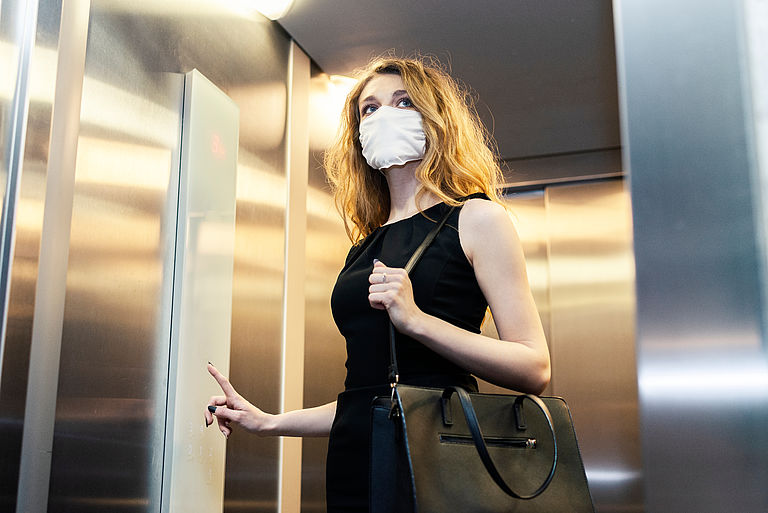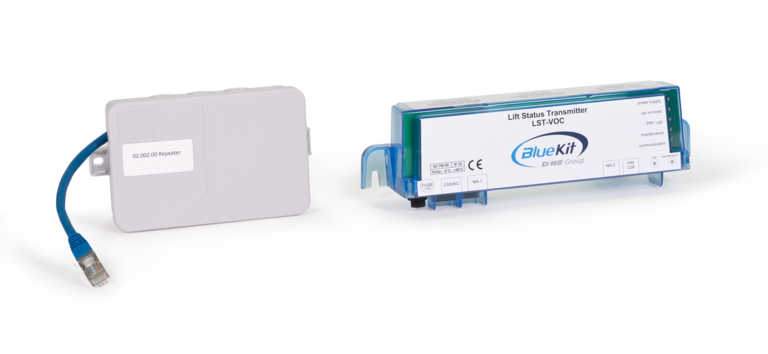

Minimizing the risk of infection in a lift The spread of viruses in lift cars can be curbed by regular and controlled ventilation of the lift shaft.
In these times of COVID-19 it is more important than ever to thoroughly ventilate buildings and confined spaces because, according to scientific studies, the COVID-19 virus can remain suspended in the air for minutes or even hours in tiny droplets called aerosols. This means that direct contact with an infected person is not absolutely necessary for catching the virus. This fact becomes particularly evident in lifts, where the risk of infection rises significantly due to the confined space and high volume of use.
Unless contaminated air is adequately removed and discharged to the atmosphere by a ventilation duct in the lift shaft, aerosols will whirl around uncontrolled in the lift car and get into the lift shaft through the car's ventilation openings, thereby exposing lift users to increased risk.
BlueKit combats viruses in lift cars

The BlueKit systems for lift shaft ventilation control the flaps of the ventilation ducts leading to the atmosphere based on the use of the lift, as they have always done. The Lift Status Transmitter (LST) detects not only the air quality (CO2, temperature, etc.), but also the presence of people in the lift car. This patented need-based ventilation function ensures that the lift shaft and thus also the lift car are ventilated thoroughly.
Certain BlueKit systems are programmed with energy conservation in mind, which means that the lift is ventilated only when the CO2 limit value is exceeded or when there is a fault in the system. All it takes is a quick service call to have these systems quickly and easily reconfigured and set to usage-dependent ventilation.
The upgrade for your lift
Even existing shaft smoke extraction systems from other manufacturers can be easily equipped with the usage-dependent ventilation function with the BlueKit AirPlus package to minimise the risk of infection. After all, the risk of virus transmission by aerosols and thus hygienic ventilation in lifts will remain a key issue in future.
